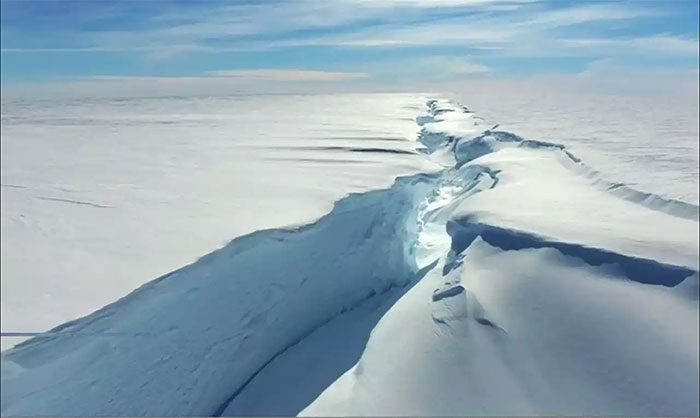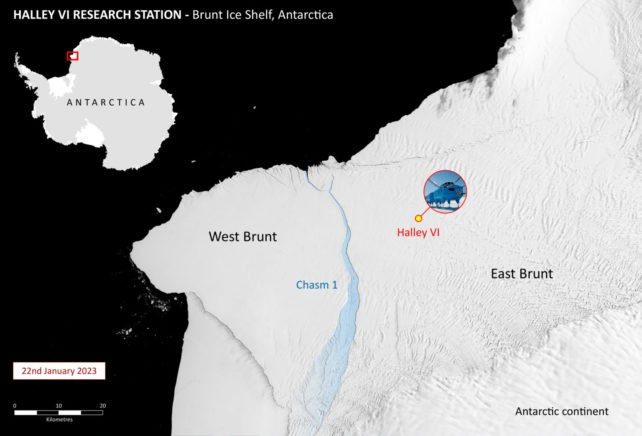On January 23, researchers announced that a gigantic iceberg, nearly the size of Greater London, has broken away from the Antarctic ice shelf near a research station. This is the second similar separation in the past two years.

Chasm-1 has been inactive for many years but has now created a new iceberg. (Photo: BAS).
The British Antarctic Survey (BAS) stated that the formation of the new iceberg is not attributed to climate change, which is accelerating the rate of sea ice loss in the Arctic and parts of Antarctica.
The drifting iceberg is named Chasm-1, covering an area of 1,550 km2, and it has separated from the Brunt Ice Shelf, which is 150 meters thick, a decade after scientists first discovered large cracks on the ice shelf.

Map showing Chasm-1 has created a massive iceberg the size of Greater London. (Photo: BAS).
A year ago, a similar dramatic separation occurred, involving an iceberg that spanned 1,270 km2.
“This event was predicted and is part of the natural behavior of the Brunt Ice Shelf,” said Dominic Hodgson, a glaciologist at BAS. “It is not related to climate change,” he added.
The British Halley VI research station monitors the state of the vast floating ice shelf daily but was not affected by the latest iceberg calving.
The mobile research facility was relocated inland for safety reasons during 2016-2017 due to the risk of the cracks in the ice leading to a break.
Since then, staff have only been able to work there during the Antarctic summer from November to March. Currently, there are 21 researchers present at the station.
They maintain power supplies and facilities that enable scientific experiments to operate remotely throughout the winter when it is dark for 24 hours and temperatures drop below -50 degrees Celsius.
Hodgson further stated: “Our scientific and operational teams continue to monitor the ice shelf in real-time to ensure its safety and to maintain the scientific output we undertake at Halley.”
According to BAS, the world’s leading agency for environmental research in the region, the iceberg will be documented by aircraft around February 6.


















































